TO THE LIGHTHOUSE
The lighthouse in Bolivar, Texas, one of two surviving iron lighthouses on the Texas Coast, is one of the most prominent historical landmarks on Galveston Bay. It was erected in 1873 and operated until 1933. During the Galveston hurricanes of 1900 and 1915, as many as 125 people found refuge inside the iron tower.
A lighthouse, with its connotations of refuge, illumination, and salvation, is the central metaphor of Virginia Woolf’s novel To the Lighthouse. Woolf spent childhood summers on the coast of Cornwall near St. Ives. To the Lighthouse, although set in the Hebrides, is an essentially autobiographical work which explores the secret, underlying relationships of the family, the intensity of childhood experience, and, importantly, the role of the artist in interpreting these deepest and most universal of human feelings.
My piece, inspired by Woolf’s novel, is an attempt to possess or to appropriate her text and to remake it into my own. I have overlayed each page of the novel, from beginning to end, with a visual “text” which interferes with the printed words beneath. Importantly, many of the images are of the Bolivar lighthouse and the Texas coast, sites of my own childhood experiences. Thus, the piece is, in effect, a synthesis of my landscape, location, and language with Virginia Woolf’s. It is a way of coming to terms with my sense of identification with the author and my profound admiration for her accomplishment.
Elizabeth Ward
1988
-
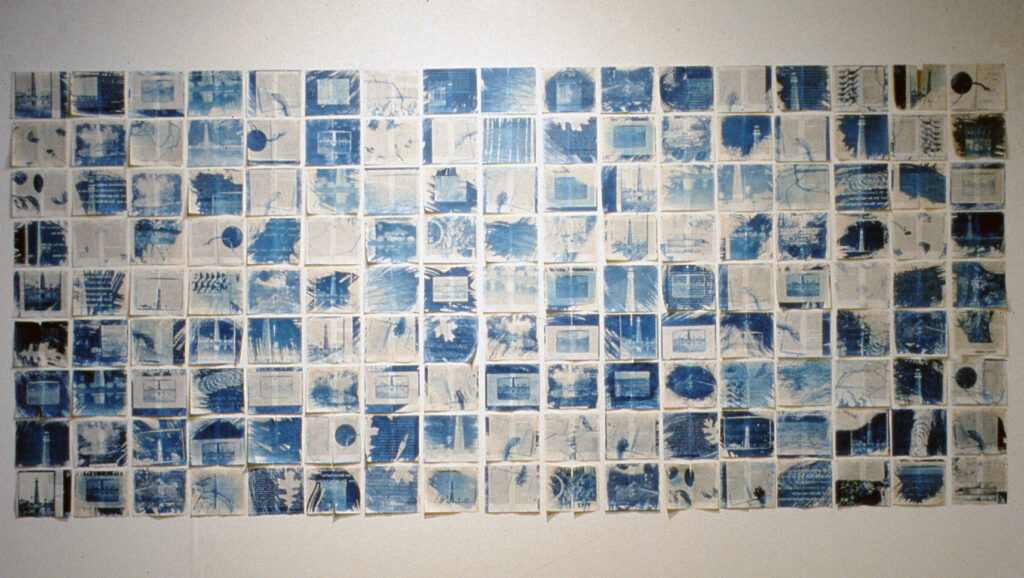
To the Lighthouse Installation, 1988, Cyanotype on pages of To the Lighthouse by Virginia Woolf, Collection Museum of Fine Arts, Houston
-
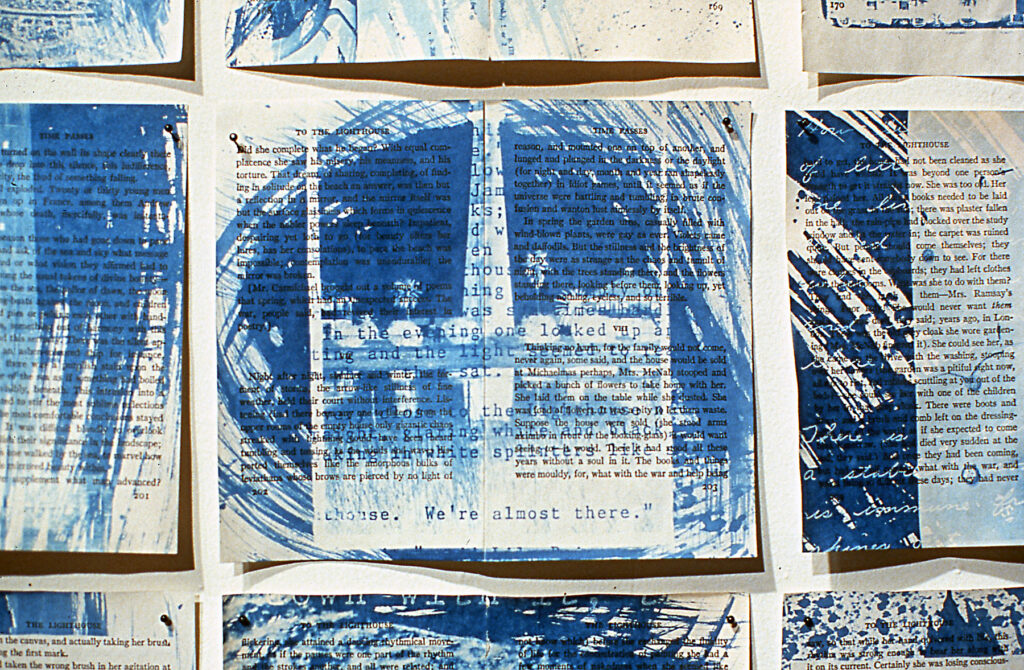
To the Lighthouse Installation (detail), 1988, Cyanotype on pages of To the Lighthouse by Virginia Woolf, Collection Museum of Fine Arts, Houston
-
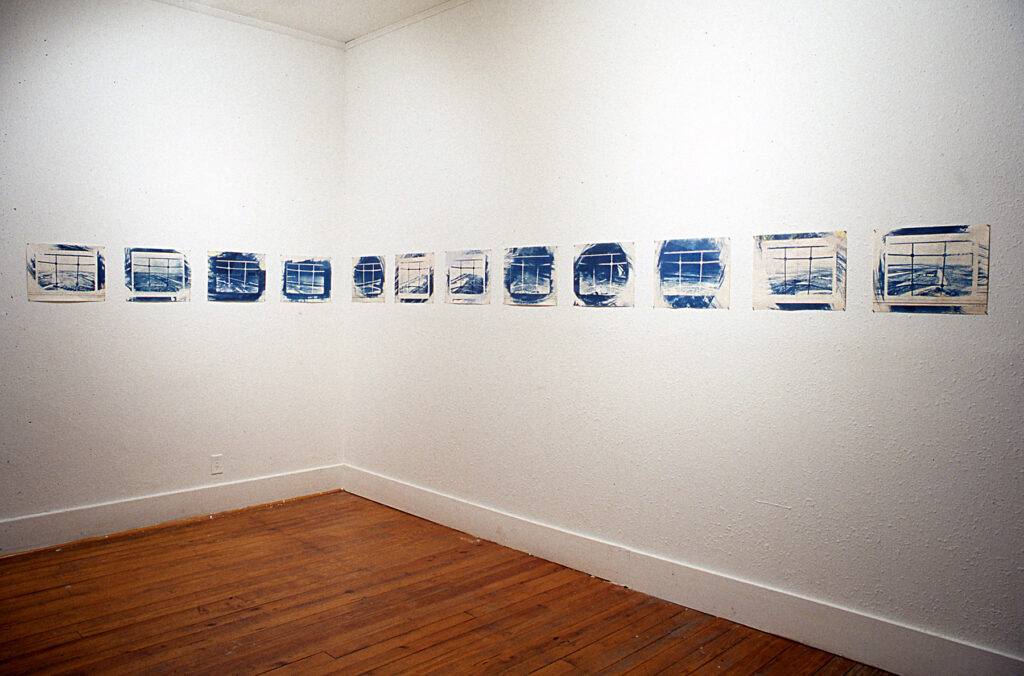
From the Lighthouse, 1992, Cyanotype on nautical maps, Installation Galveston Art Center
-
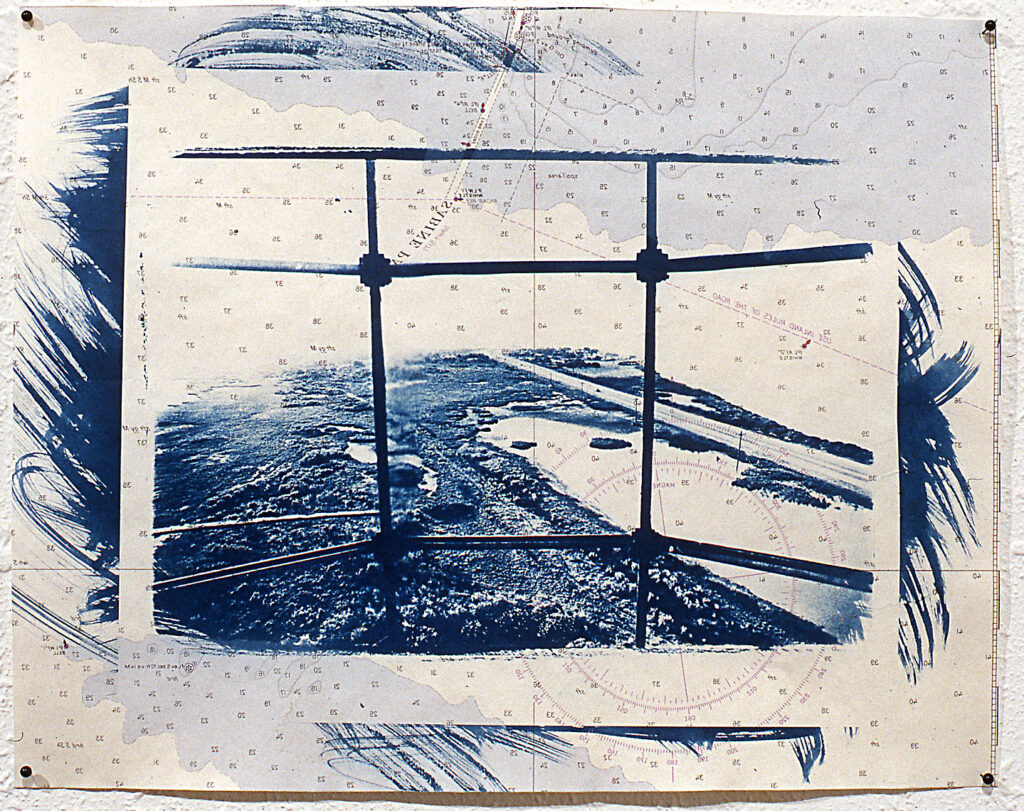
From the Lighthouse (detail), 1992, Cyanotype on nautical maps, Installation Galveston Art Center
-
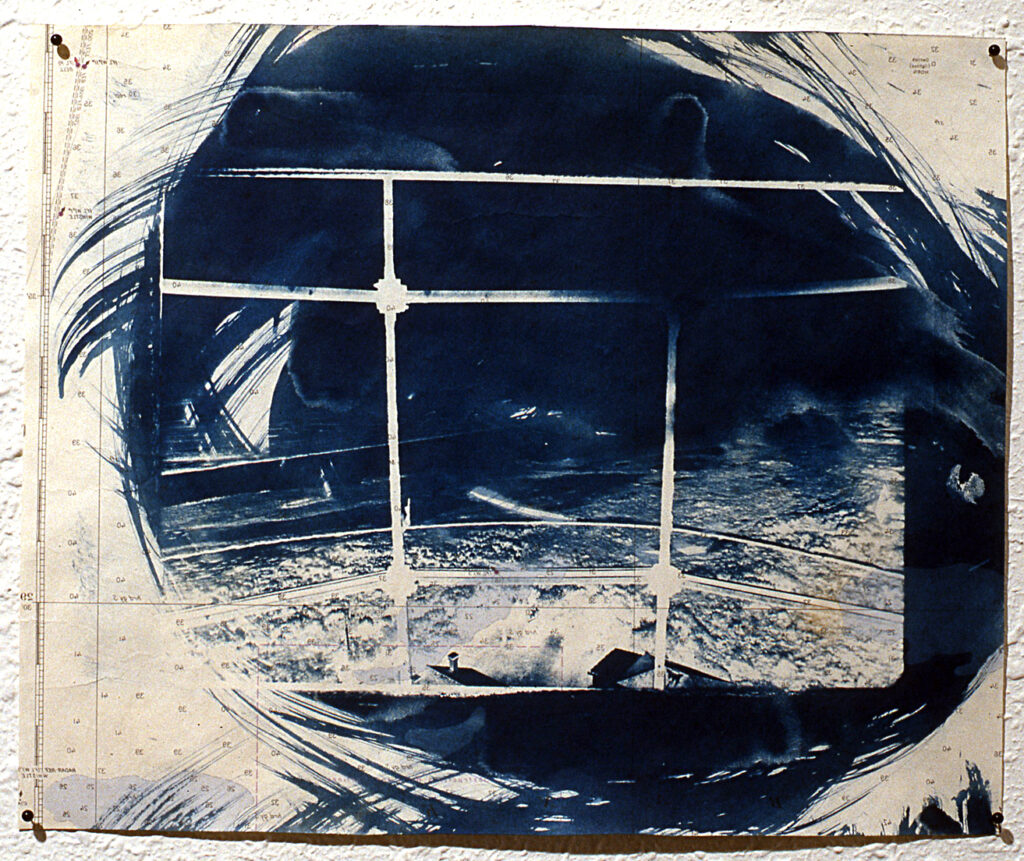
From the Lighthouse (detail), 1992, Cyanotype on nautical maps, Installation Galveston Art Center
-
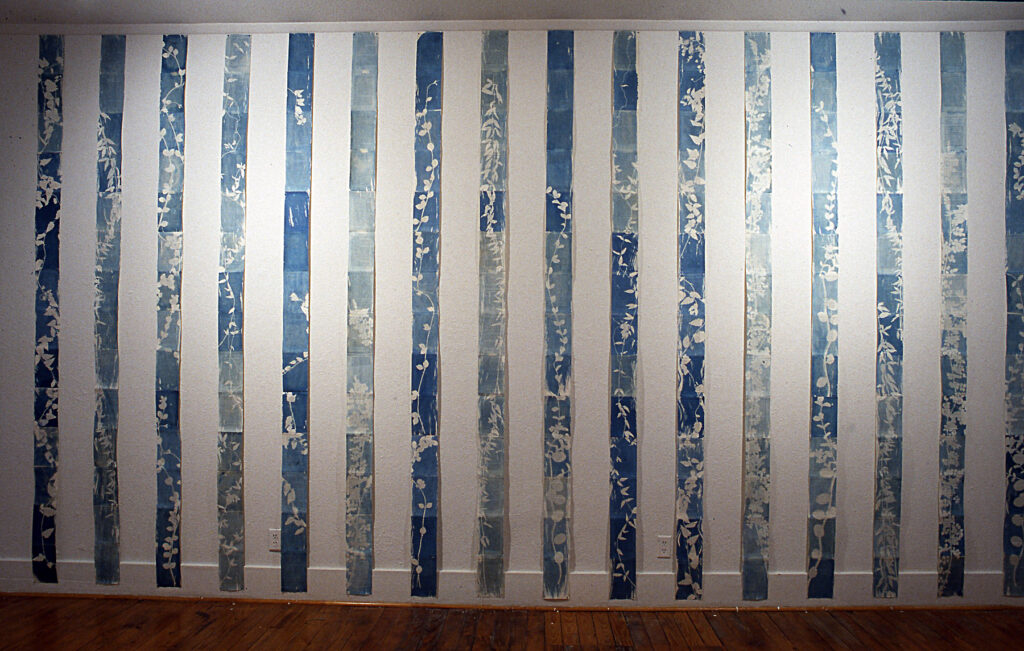
The Pencil of Nature/The Search for Form, 1992, Cyanotype on pages of The Search for Form by J. A. Ward, Installation Galveston Art Center
-
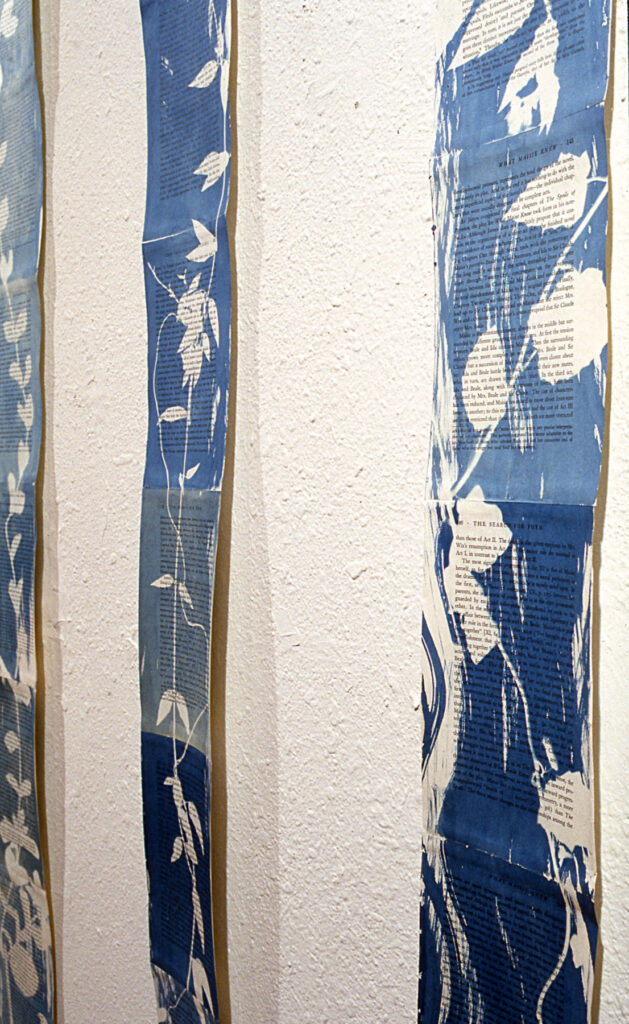
The Pencil of Nature/The Search for Form (detail), 1992, Cyanotype on pages of The Search for Form by J. A. Ward, Installation Galveston Art Center
-
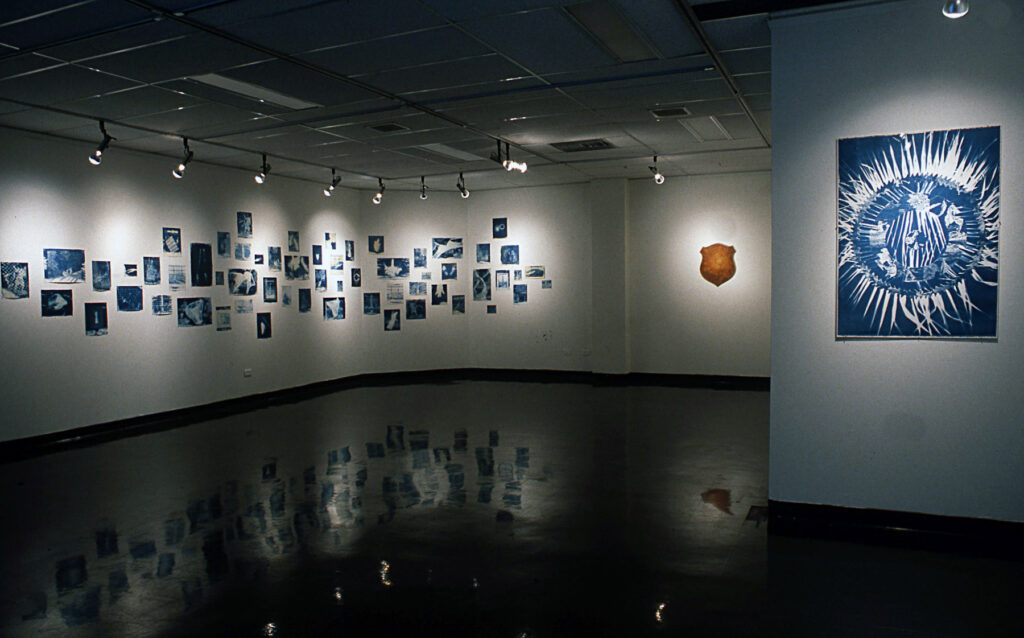
Installation Ida Green Gallery, Austin College, Sherman, Texas
-
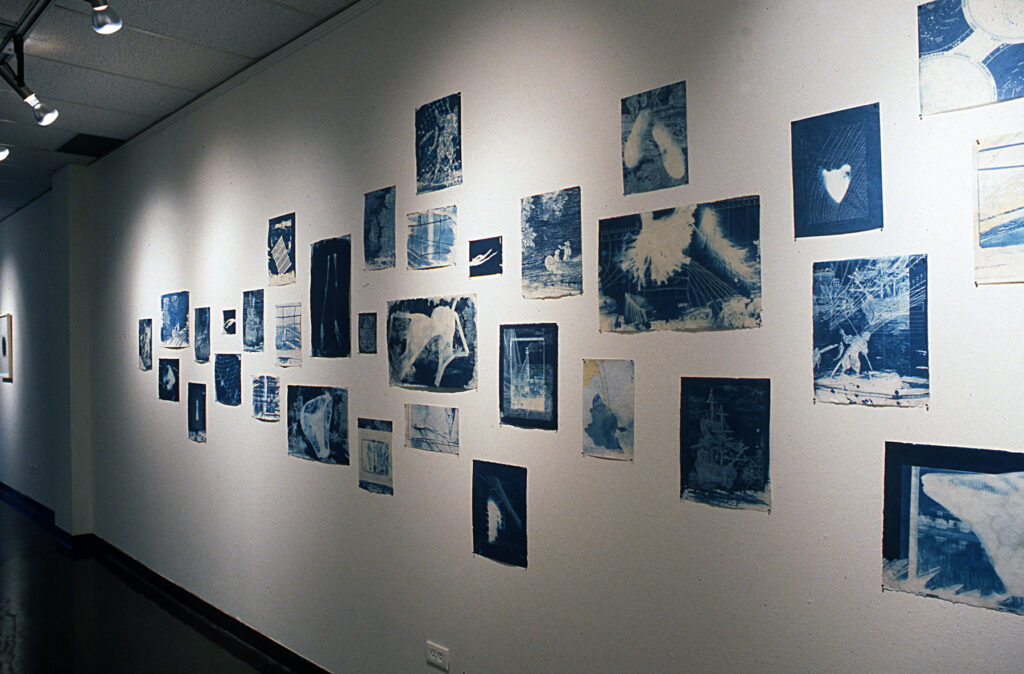
A Walk on the Beach, 1994, Cyanotypes on paper, Installation Ida Green Gallery, Austin College, Sherman, Texas
-
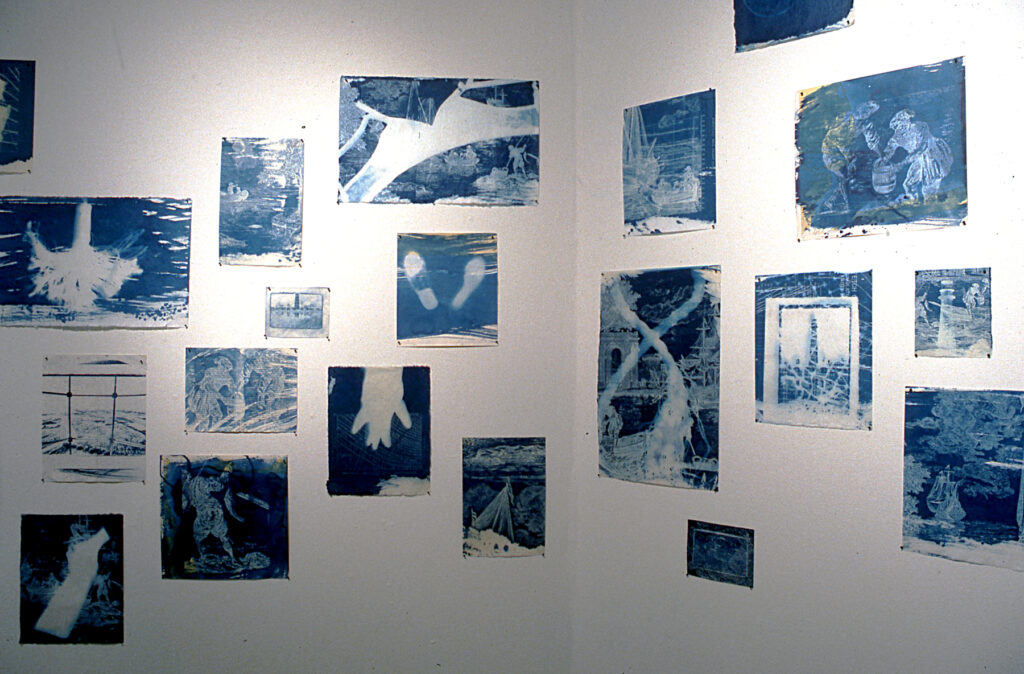
A Walk on the Beach, 1994, Cyanotypes on paper, Installation Ida Green Gallery, Austin College, Sherman, Texas
-
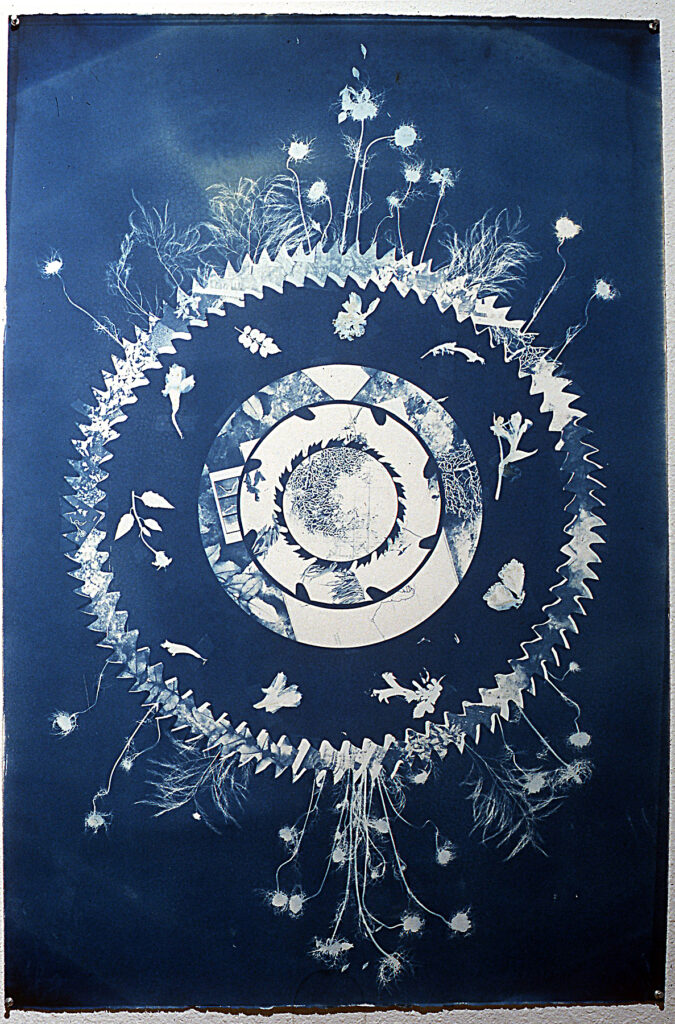
Flora, 1994, Cyanotype on paper, 41 ½ x29 ¾”
-
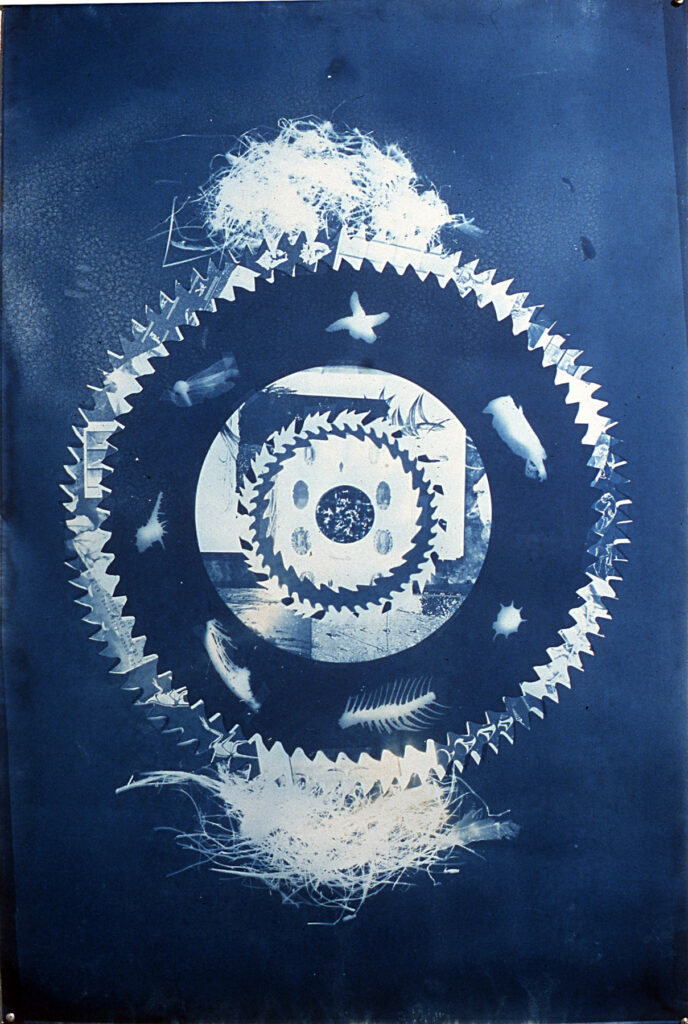
Fauna, 1994, Cyanotype on paper, 41 ½ x29 ¾”
-
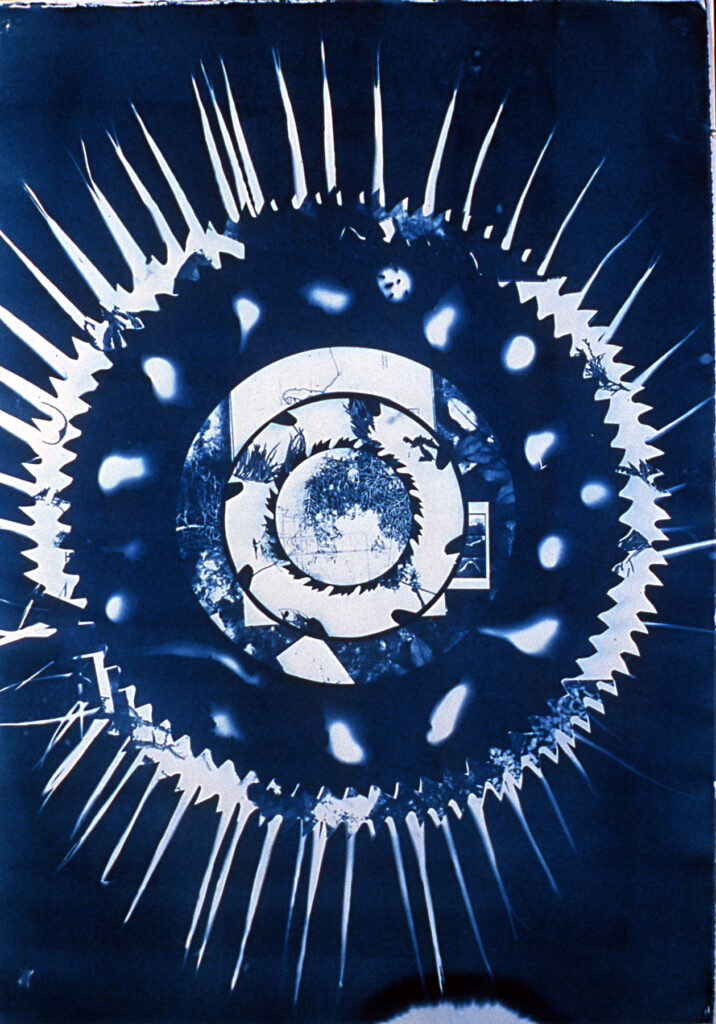
Urchin, 1994, Cyanotype on paper, 41 ½ x29 ¾”
-
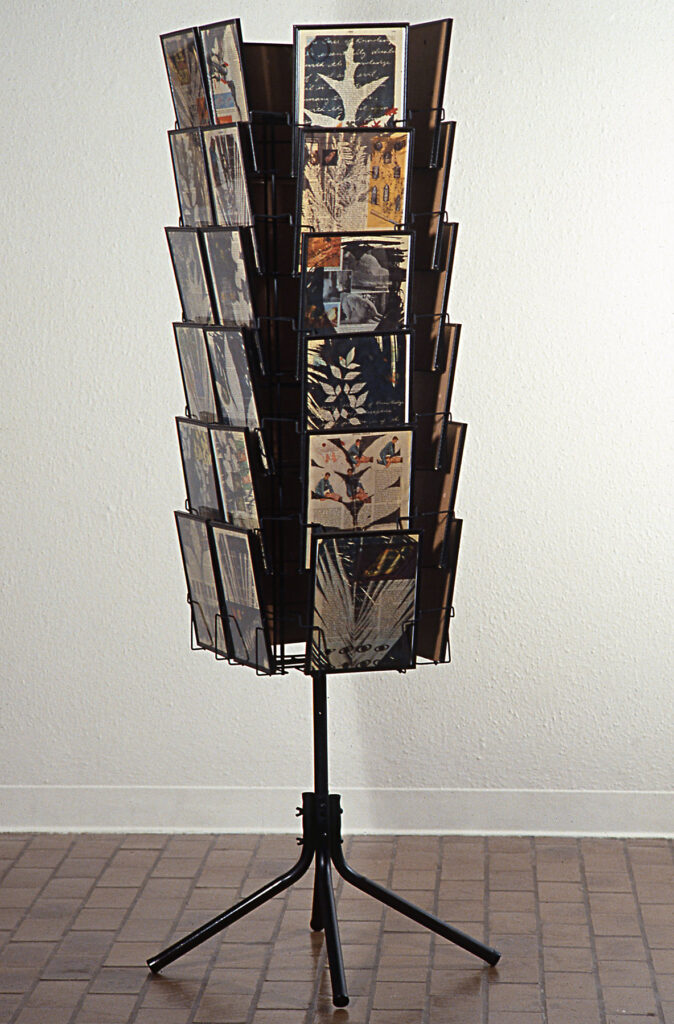
Tree of Knowledge, 1989, Toned cyanotypes on encyclopedia pages, 67 x 18 x 16”
-
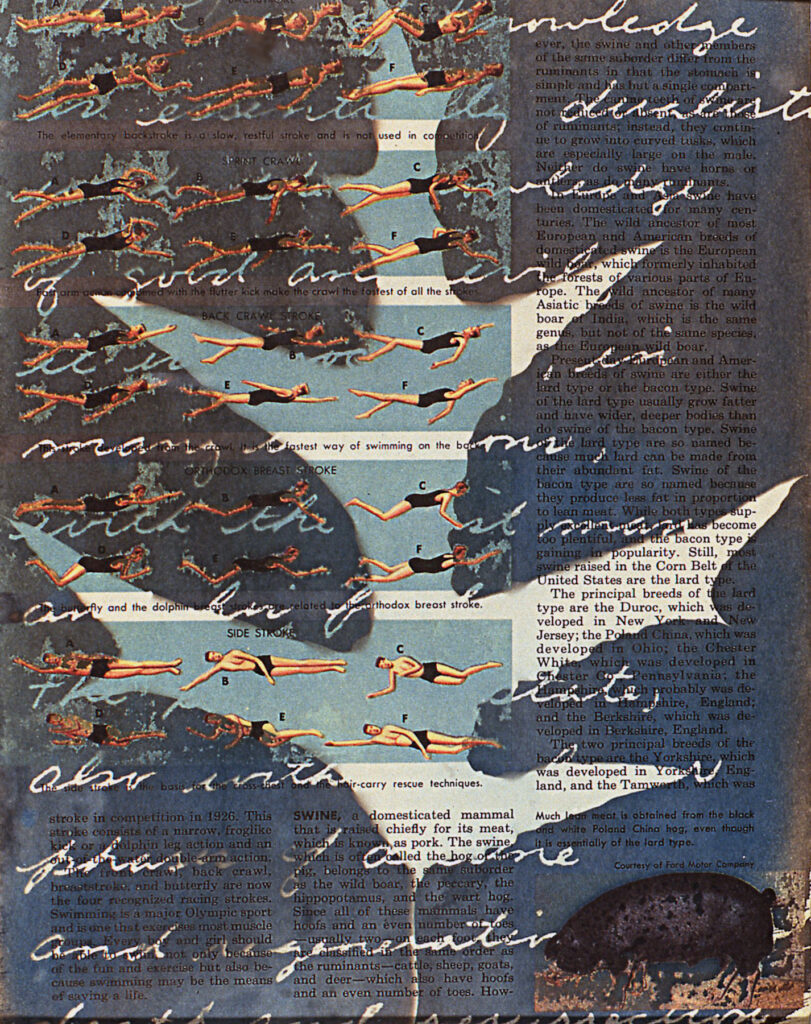
Tree of Knowledge (detail), 1989, Toned cyanotypes on encyclopedia pages, 67 x 18 x 16”
-
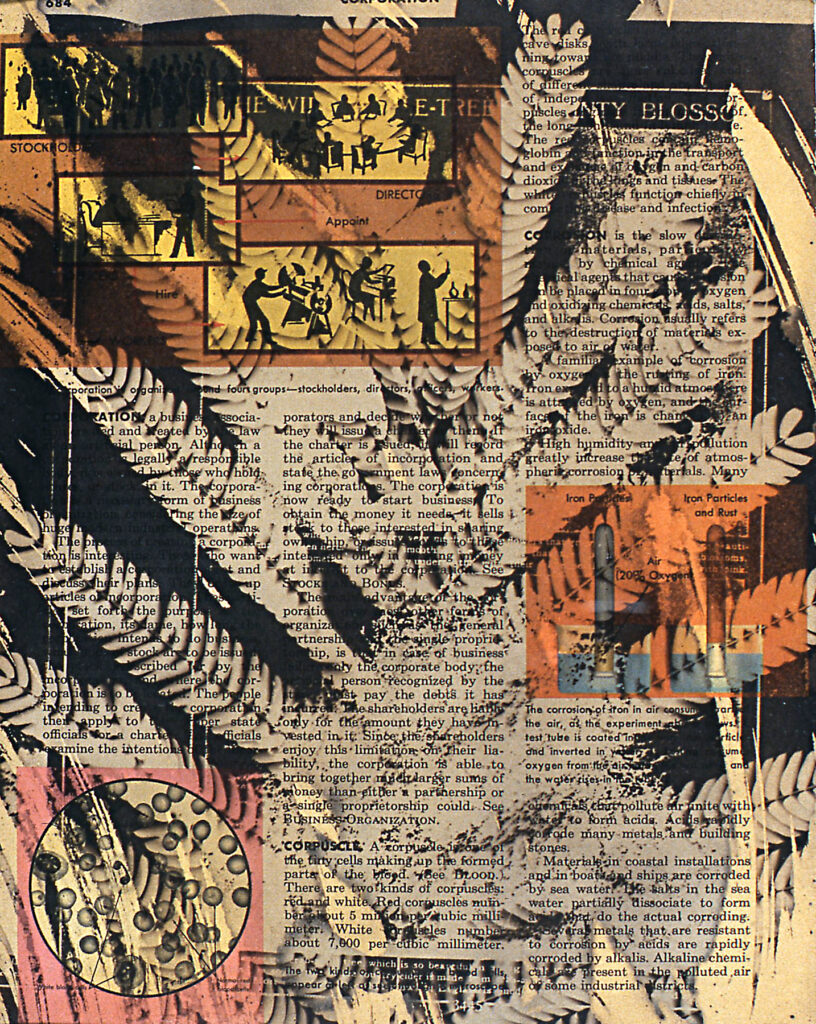
Tree of Knowledge (detail), 1989, Toned cyanotypes on encyclopedia pages, 67 x 18 x 16”
-
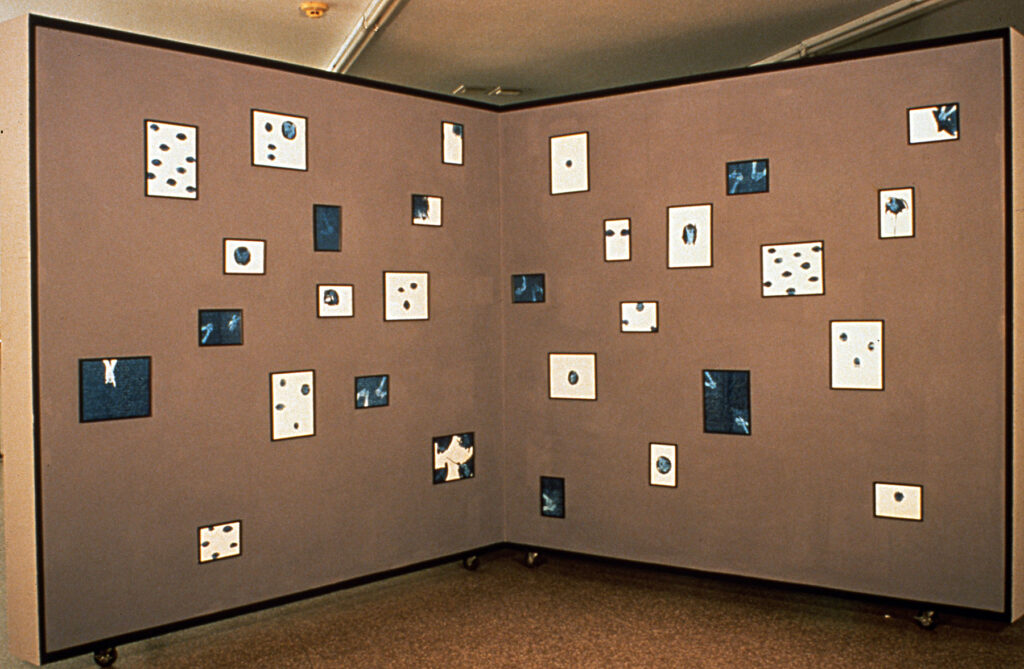
Trompe l'Oeil, 1989, Cyanotypes on braille pages, Installation Houston Center of Photography
-

Trompe l'Oeil, 1989, Cyanotypes on braille pages, Installation Houston Center of Photography
-
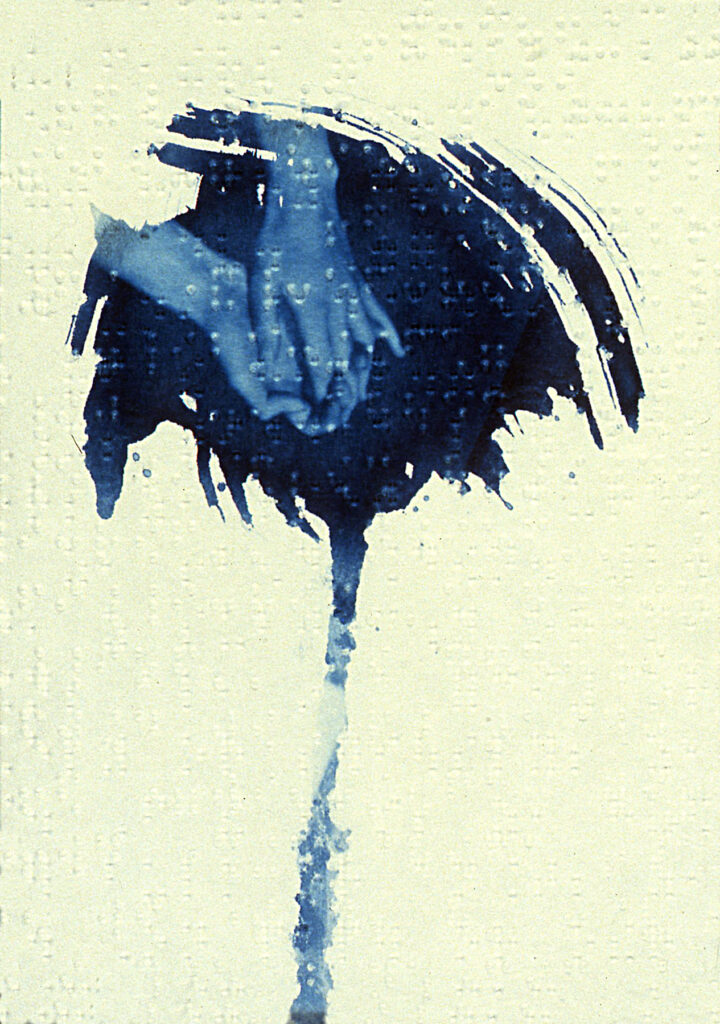
Trompe l'Oeil, 1989, Cyanotypes on braille pages, Installation Houston Center of Photography
-
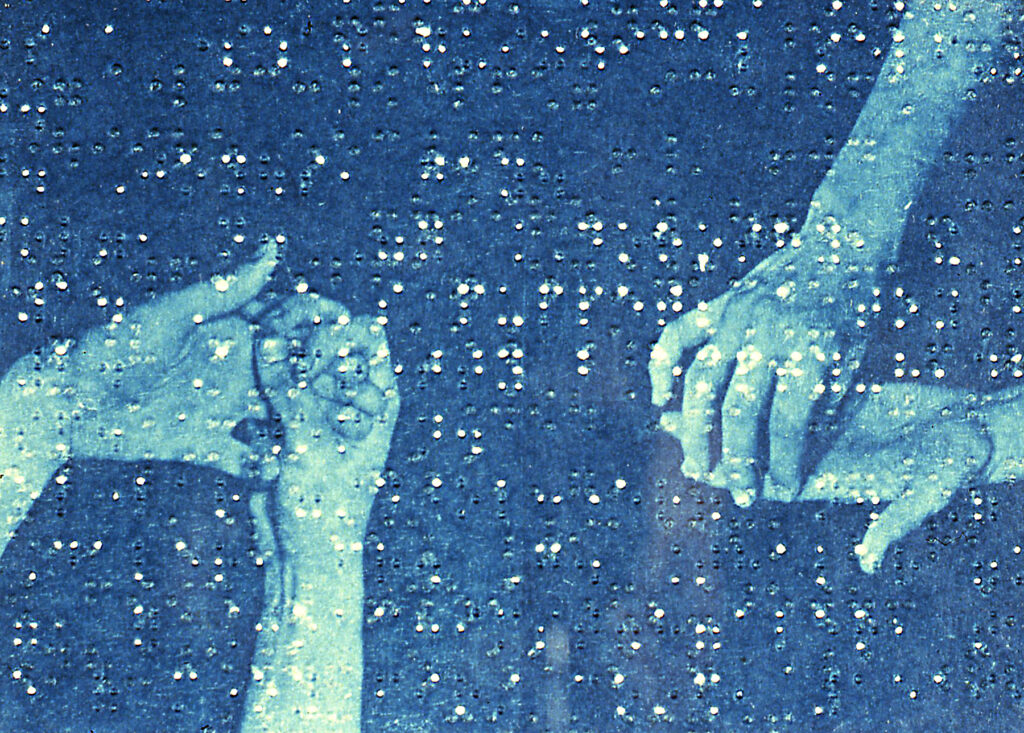
Trompe l'Oeil (detail), 1989, Cyanotypes on braille pages, Installation Houston Center of Photography